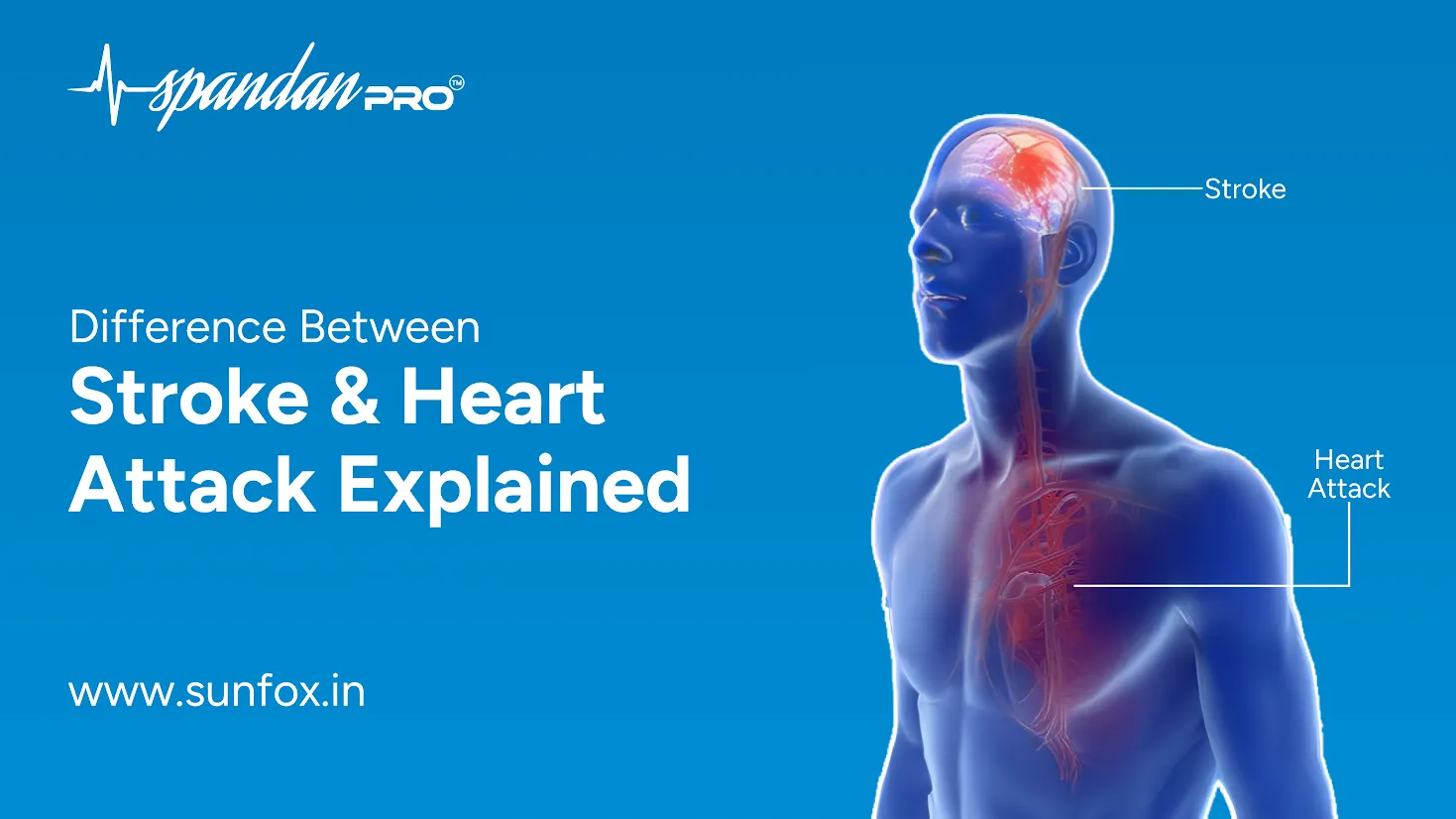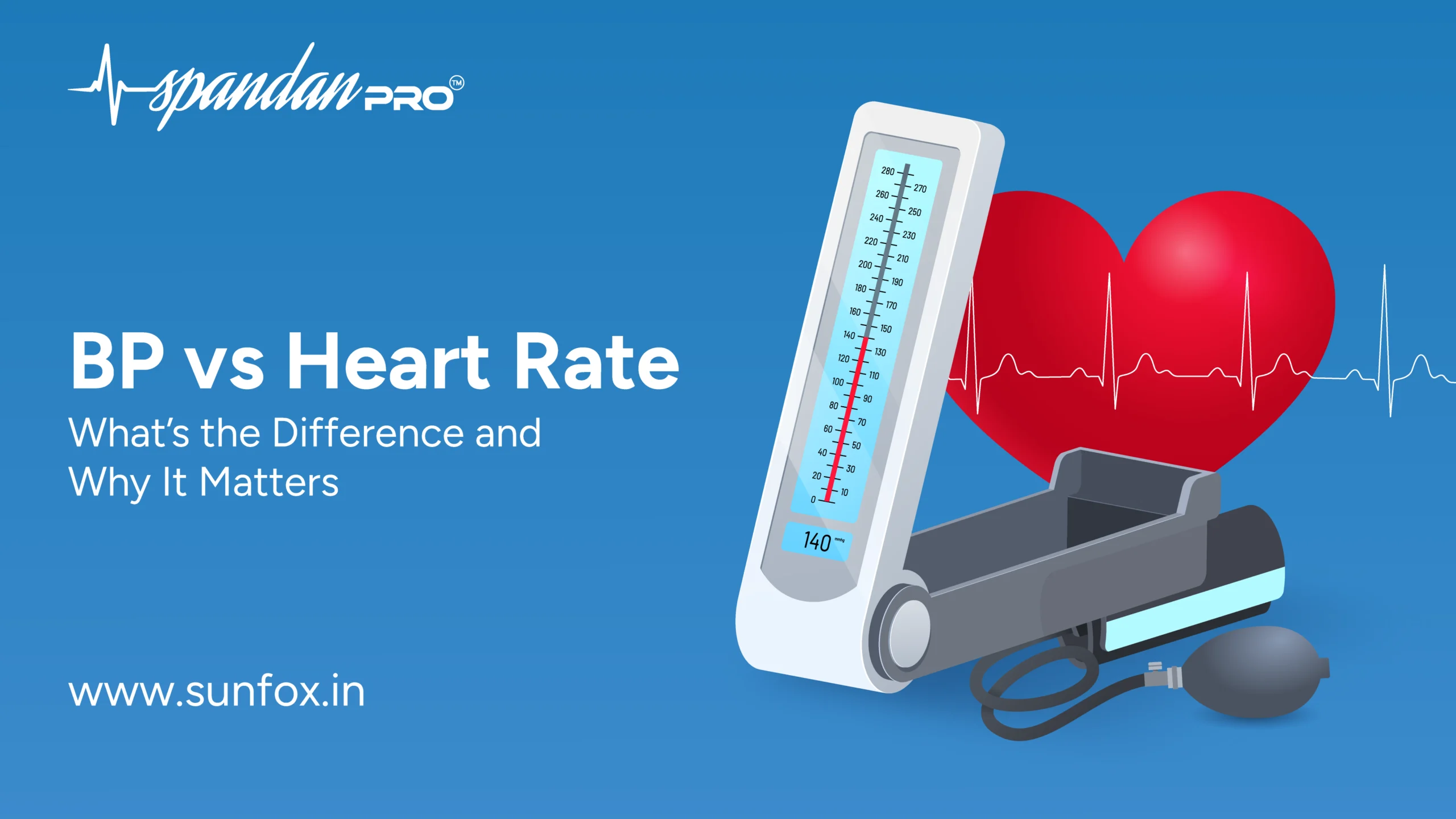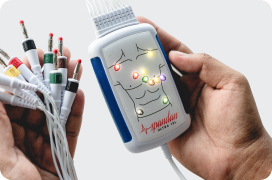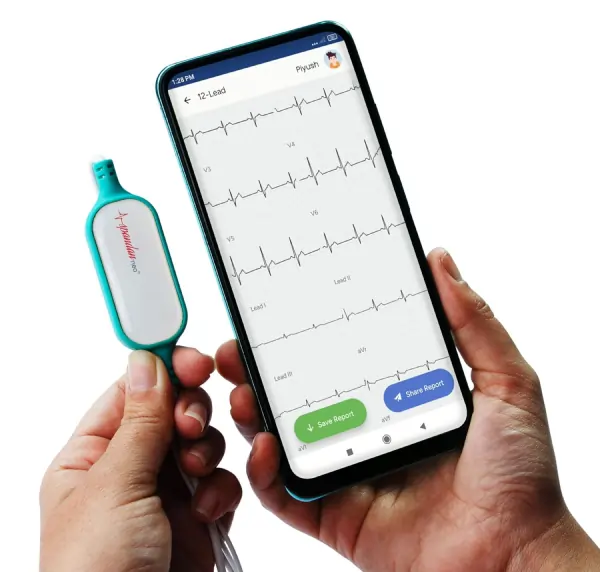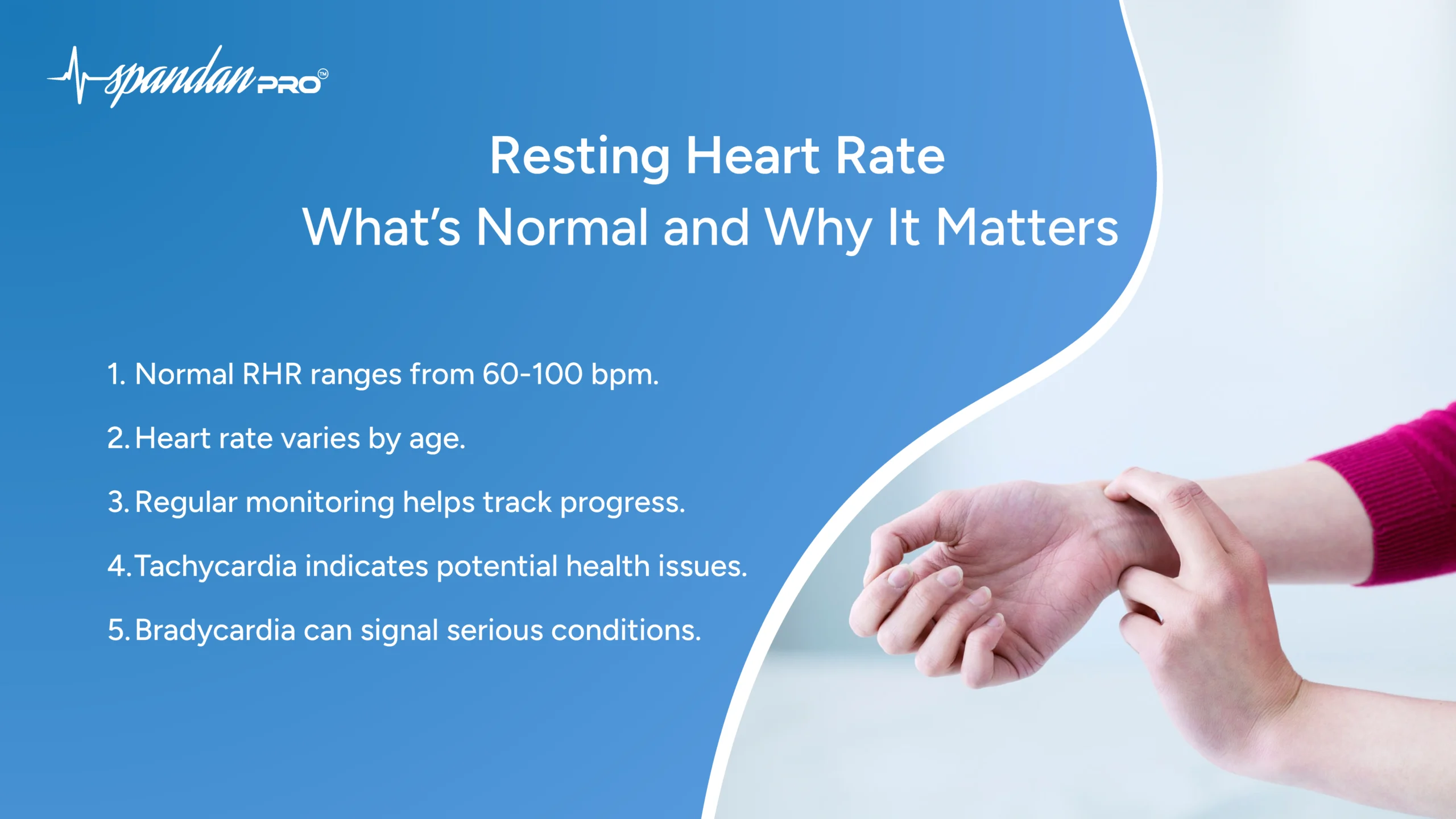
Understanding Your Resting Heart Rate: What’s Normal and Why It Matters
Table of Contents
Understanding your resting heart rate is crucial for everyone,Resting heart rate, or RHR, is possibly the most easy but insightful measurement that is usually overlooked. Your resting heart rate (RHR) can provide valuable insights into your overall health, cardiovascular health, and stress levels. In this blog, we will discuss the meaning of resting heart rate, its importance,What’s normal and why it matters to improve your health.
We will also examine the variables that influence Resting Heart rate, and methods for measuring it. Finding out what your heart rate is at rest constitutes one of the first actions that you must take on your path towards a healthier life, whether you’re an athlete looking to push yourself to new heights in fitness or you’re just curious about health in general. Now let’s get going!
What is Your Resting Heart Rate?
The total number of times your heart beats per minute while at rest is known as your resting heart rate. Usually, you take this measurement shortly after getting out of bed in the morning. A precise resting heart rate can reveal information about your cardiovascular health and heart health efficiency.
Types of Heart Rate

Gaining knowledge about the various heart rate variations might help you make important decisions about your cardiovascular health. Bradycardia, tachycardia, and normal heart rhythms all signify different heart fitness and function levels. Understanding these differences is crucial to keeping an eye on your health and taking care of any possible issues.
Normal Heart Rate: Usually falls between 60 and 100 beats per minute (bpm) in people who are at rest. It is still acceptable for a well-trained athlete to have a resting heart rate under 60 bpm.
Tachycardia: refers to a resting heart rate of more than 100 beats per minute. Numerous things, such as stress, worry, fever, anemia, or heart-related problems, can contribute to it.
Bradycardia: Described as a resting heart rate of less than 60 bpm. Although it can happen spontaneously in skilled athletes, it can also be a sign of underlying medical problems, particularly if it is accompanied by other symptoms like exhaustion or dizziness.
What’s a Good Resting Heart Rate?
A normal resting heart rate for an individual ranges from 60 to 100 beats per minute. Heart rate is used to denote the number of heartbeats per minute. Resting Heart Rate, or RHR, is how many times your heart beats when you’re not active, usually taken in the morning before getting out of bed.
It is an indication of how effective your heart is and the fitness level altogether. Generally, a lower RHR indicates better cardio hea
lth and fitness. High RHR could indicate stress, fatigue, or even some health issues. Factors that influence RHR include age, activity, hydration, and stress, making it a versatile measure to track the changes in health and fitness. An excessively fast or slow heartbeat or pulse may be a sign of issues with the heart or with health in general.
Is Your Heart Rate Normal?
Take into account the following when determining whether your resting heart rate is normal:
- Measure Frequently: Every day, take a heart rate reading to establish a baseline.
- Seek Patterns: Maintaining consistency is essential. Seek medical attention if your RHR regularly exceeds 100 bpm (tachycardia) or drops below 60 bpm (bradycardia).
- Recognize Symptoms: Weariness, dizziness, or palpitations could point to a more serious problem.
It is quite easy to check your heart rate; all you have to do is feel your pulse, which is the sensation of your heart pumping, on either your wrist or your neck. The term “radial pulse” also refers to the pulse felt on your wrist, whereas “carotid pulse” refers to the pulse felt on your neck. You may monitor your heart rate by simply following these steps:
The pulse on the wrist (Radial Pulse)
- Step 1: Lift your hand so that the palms face upward.
- Step 2: Place your middle and index fingers together on your wrist, slightly below the base of your thumb, using your free hand.
- Step 3: Press with just enough force to detect each pulse. Do not exert excessive force.
- Step 4: Count the number of times you feel your pulse by keeping an eye on the watch or clock.
- Step 5: Take one minute to take your pulse.
The Pulse on the neck (Carotid Pulse)
- Step 1:Identify the artery in one side of your neck near the windpipe. You can take your carotid pulse on either side of your neck. Never try this if you have a history of plaques in the carotid neck arteries.
- Step 2:To feel the pulse in your carotid artery, place the tips of your index and long fingers in the groove that runs along your windpipe. Avoid applying pressure to the carotid arteries on either side of your neck simultaneously. You can feel faint, dizzy, or lightheaded as a result of this.
- Step 3: Just enough pressure should be applied to feel every beat.
- Step 4:Count the number of times you feel your pulse while keeping an eye on the watch. Take a minute to note your heart rate.
Normal Pulse Rate according to age
The table below displays the target heart rate ranges and average maximum heart rates for different age groups during moderate and vigorous physical activity, based on information from the American Heart Association (AHA).

How to calculate heart rate on EKG
The heart rate on an ECG can be found using a variety of techniques. We’ll look at the three best techniques for dealing with different heart rhythms below:
- Regular rhythms
- Fast rhythms
- Irregular rhythms
Prior to investigating various methods for determining heart rate on an ECG, it is crucial to grasp the structure of the ECG paper. Usually, ECG paper is adjusted to a common pace of 25 mm/s and a voltage of 10 mm/mV. The paper consists of a pattern of squares that can determine heart rate.
Five big squares, when placed in standard units, represent a single second. A large square represents 0.2 seconds, while a small square equals 0.04 seconds.
- 0.04 seconds x 5 small boxes = 0.2 seconds
- 0.2 seconds x 5 big boxes = 1 second
Furthermore, it is crucial to comprehend the appearance of a heartbeat on an ECG. The contraction and relaxation of the heart muscle over time are depicted by a sequence of waves in a heartbeat. The R wave, which is usually the largest deflection on an ECG, indicates the contraction of the heart’s main muscle. By identifying the R wave in every heartbeat, we can calculate the time interval between one heartbeat and the next.
In conclusion, the heart rate is measured in beats per minute (bpm). One minute consists of 60 seconds. By doing this, we can use our understanding of the ECG paper and skill in recognizing R waves to determine an individual’s heart rate.
- 60 seconds (one minute) / 0.2 seconds (one large square) = 300
- 60 seconds (one minute) / 0.04 seconds (one small square) = 1500
1. Regular rhythms
To determine a normal heart rate, one can simply approximate it by observing the wide squares (0.2 seconds) on an ECG. Merely locate two successive R waves and tally the amount of big squares in between. By splitting this figure by 300 (keep in mind that this figure equals 1 minute), we can determine an individual’s heart rate.
- Rate = 300 / number of large squares between consecutive R waves
2. Fast rhythms
Two consecutively close R waves in fast heart rhythms may make it difficult to accurately determine a person’s heart rate using the larger squares. In situations similar to this, utilizing the smaller squares for heart rate calculation can be beneficial.
Just like in the previous example, locate two successive R waves and calculate the number of small squares (0.04s) between them. If we divide this number by 1500 (remember, this number also equals one minute), we can determine someone’s heart rate.
- Rate = 1500 / number of small squares between consecutive R waves.
3. Irregular rhythms
Determining heart rate for irregular heart rhythms is difficult due to erratic and unevenly spaced heartbeats. In order to address this issue, we can tally the amount of R waves in a duration of 10 seconds and then multiply that count by 6. This provides the mean beats per minute (bpm) for a rhythm strip displaying an irregular heart rate. This technique can be utilized for consistent patterns as well.
- Rate = Number of R waves over a 10 second period x 6
Why is a Steady Heart Rate bad for health?
Consistently having a heart rate that is too high or too low can lead to health problems.
Heart rate at rest exceeding 100 beats per minute: Tachycardia is when your heart rate exceeds 100 beats per minute during rest, which can elevate the likelihood of heart disease and mortality. Several factors, such as stress, hypertension, obesity, thyroid problems, and specific medications, can lead to an elevated resting heart rate.
Heart rate at rest is less than 60 beats per minute: Bradycardia, denoting a resting heart rate below 60 bpm, may signal sepsis or other medical issues requiring attention. Dizziness and an increased risk of falling can also be caused by bradycardia.
Why You Should Care About Heart Rate Variability
Paying attention to heart rate variability (HRV) is crucial for multiple reasons, as it acts as a significant measure of general health and wellness. Tracking HRV can offer important information about how your body reacts to stress, allowing you to recognize when you might be pushing yourself too hard or should consider scaling back. This realization enables more effective stress management approaches, like integrating relaxation methods or modifying your workload to promote equilibrium.
HRV is a useful tool for athletes and individuals who participate in frequent exercise when it comes to physical fitness. It can assist in optimizing your training regimen by alerting you to when your body is prepared for exercise and when it requires rest. Monitoring HRV can help prevent excessive training and improve performance, resulting in better workouts and increased fitness results.
Furthermore, there is a connection between HRV and mental well-being; increased variability is frequently associated with improved emotional control and ability to cope with anxiety and depression. By focusing on HRV, you can understand your emotions and detect any trends that need to be addressed, ultimately promoting your mental health.
A reduced HRV can be linked to higher chances of heart disease and other health problems from a cardiac point of view. Frequent monitoring enables the early identification of possible issues, inspiring you to adopt lifestyle adjustments that can improve heart health.
HRV can indicate the quality of your sleep, which is important for overall recovery and health. Comprehending how your HRV is connected to your sleep habits can assist you in making changes to enhance sleep quality and guarantee you are receiving rejuvenating sleep.
Circadian Rhythms Dictate the daily patterns of heart rate and blood pressure.
Your body’s internal clock, known as your circadian rhythm, is the routine it follows in a 24-hour day. This rhythm guides your body’s sleep and wake patterns. It also impacts various other bodily functions, such as hormones, digestion, and body temperature. It’s as if there’s a miniature conductor within you, directing a full day of biological processes like a symphony.Your brain naturally dictates your circadian rhythm, led by your body.
Circadian rhythms are essential in determining daily blood pressure patterns. Normally, blood pressure follows an anticipated pattern: it increases in the morning, coinciding with the body’s readiness for the day, stays high throughout the day, and then decreases at night while sleeping, which is called “nocturnal dipping.” This nighttime decrease is crucial for maintaining heart and blood vessel health, allowing them to relax.
The daily heart rate patterns are greatly impacted by circadian rhythms. In general, heart rate typically has a consistent pattern: it is usually lower at night while the body is resting and gradually rises in the morning as we wake up and get ready for the day. During periods of activity and stress, the body’s demand for increased blood flow is reflected by the elevated heart rate throughout the day. As night draws near, heart rate typically starts to decrease once more in anticipation of sleeping. The body’s internal clock regulates this natural variation and can be influenced by physical activity, stress levels, and light exposure. Irregular sleep schedules or working night shifts can cause disruptions to circadian rhythms, which may result in irregularities in heart rate patterns and raise the likelihood of developing cardiovascular issues.
Understanding your resting heart rate (RHR) is essential for monitoring cardiovascular health and overall wellness. Regularly measuring your RHR provides insights into your fitness levels and helps identify potential health issues. A normal RHR typically ranges from 60 to 100 beats per minute, but individual factors can influence this.
If you notice significant changes in your RHR, especially outside the normal range, consult a healthcare professional. Adopting healthy lifestyle changes—like exercise, hydration, and stress management—can positively impact your RHR. Whether you’re an athlete or simply interested in improving your health, tracking your resting heart rate is a vital step on your wellness journey.
